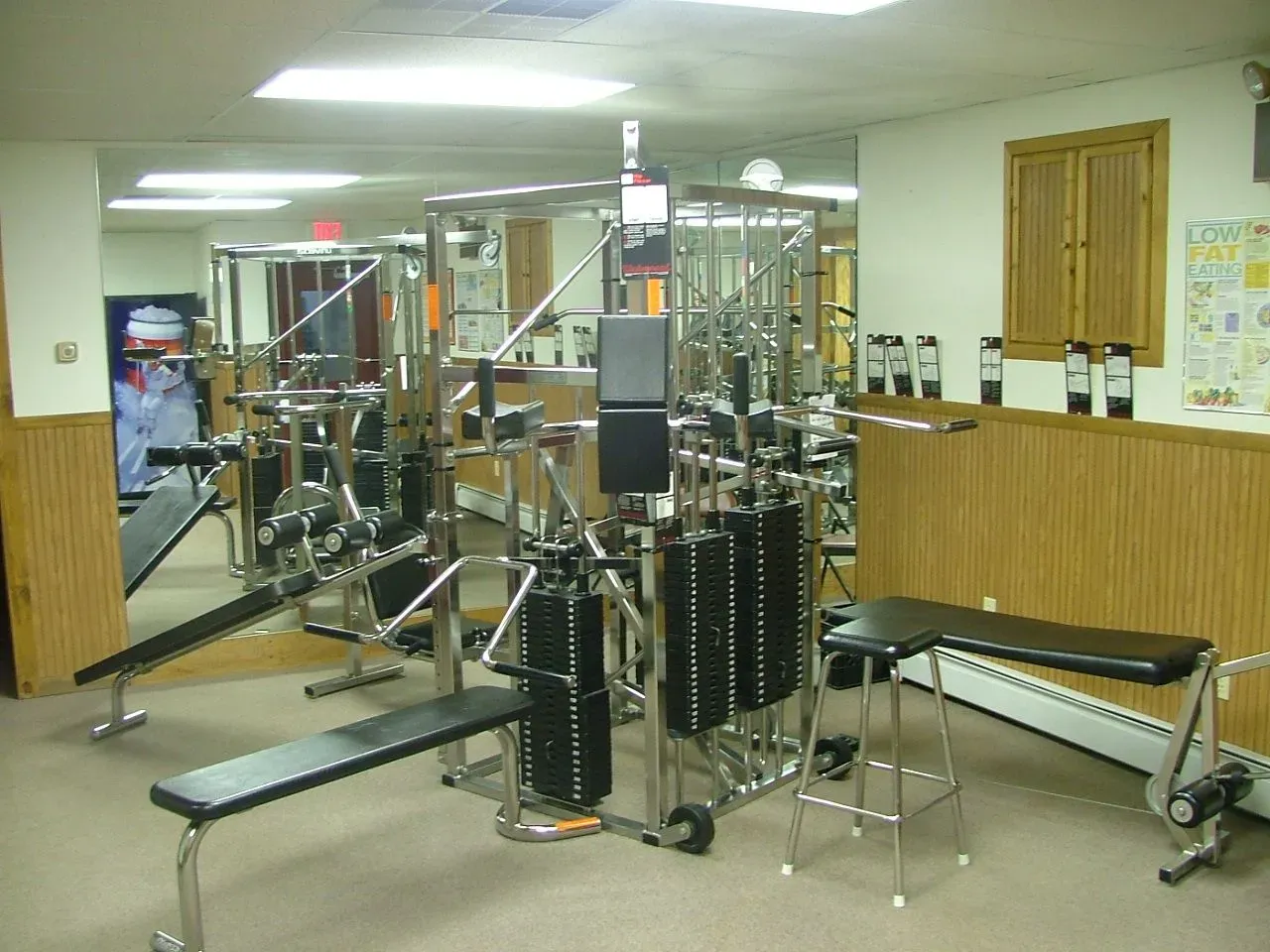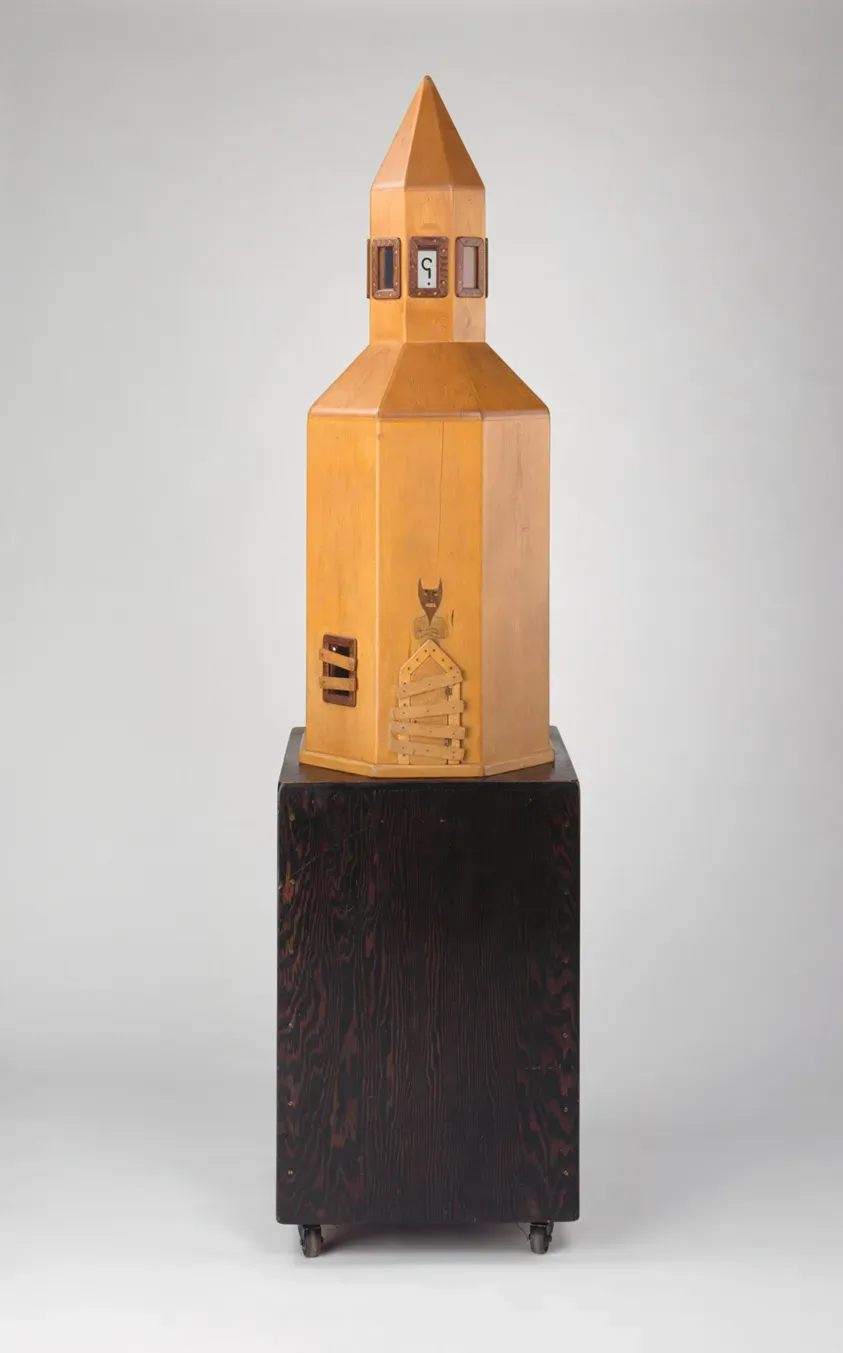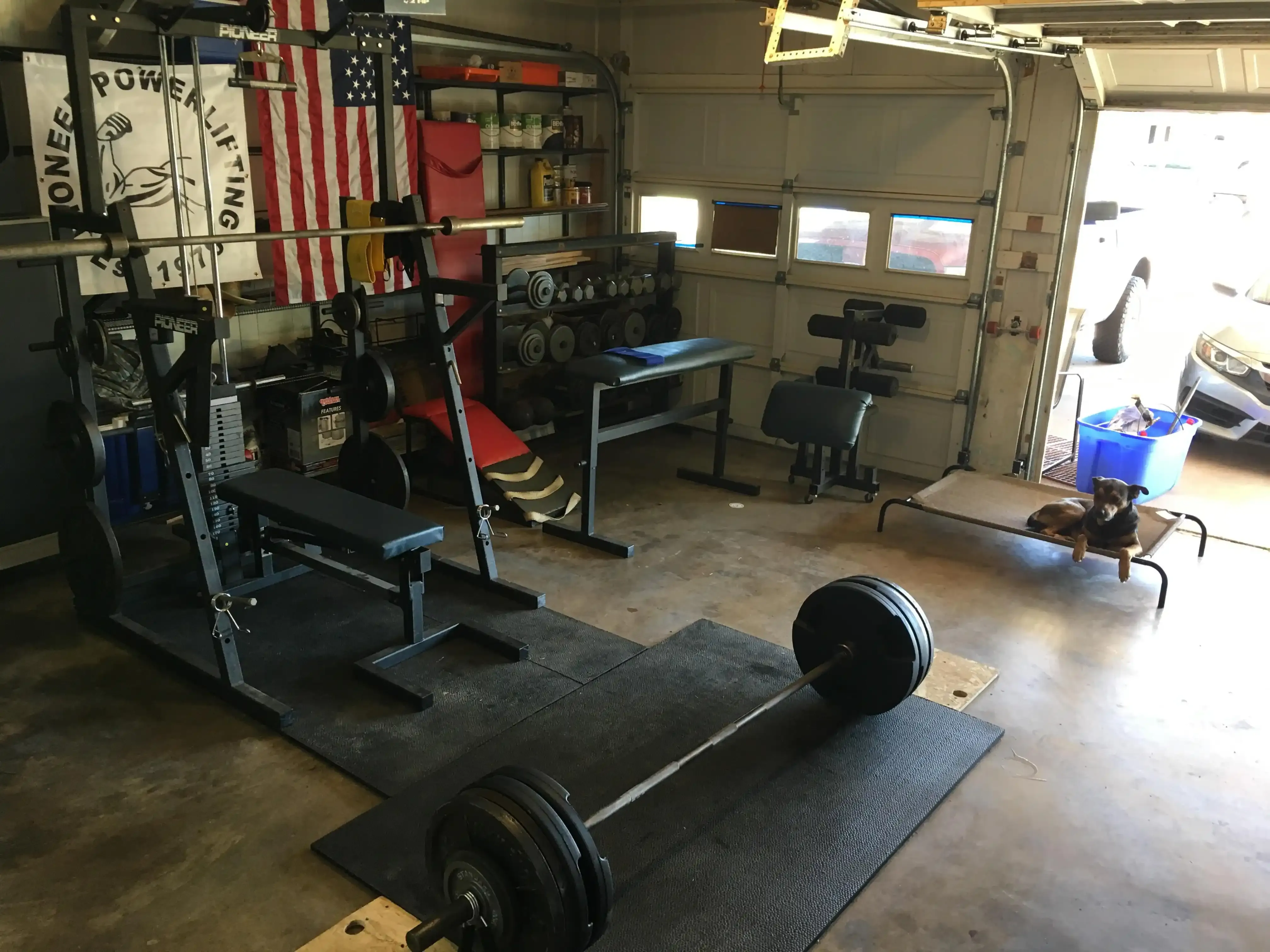Table of Contents
Forget the blinking screens, the fancy apps tracking your every twitch, and the machines that look like they escaped a sci-fi movie set. When it comes to building real, undeniable strength and a physique that looks like it was earned, sometimes you need to strip things back. Way back. We're talking about the kind of gear your grandfather might have used, equipment built for purpose, not just profit. If you're tired of the latest fitness fads and crave a workout space that’s about raw effort and tangible results, then let's talk about old.school home gym.equipment.
Why Old.School Home Gym.Equipment Still Hits Hard
Why Old.School Home Gym.Equipment Still Hits Hard
The Simplicity Argument
Look, modern fitness gear has its place, sure. But there's a reason why things like barbells, dumbbells, kettlebells, and pull-up bars haven't gone anywhere for a century. They are brutally simple. You pick it up, you lift it, you put it down. There's no complex programming, no subscription required to unlock features, and frankly, less to break. This kind of old.school home gym.equipment forces you to use your body as a unit, engaging stabilizer muscles you didn't even know you had. It’s about mastering fundamental human movements – pushing, pulling, squatting, hinging – not just isolating one tiny muscle group on a shiny machine. Simplicity breeds focus, and focus breeds results.
Built to Last, Not Replace
How many stories have you heard of a treadmill's motor dying after a few years, or a resistance band snapping mid-set? It happens. Now, think about a solid iron dumbbell. Unless you drop it off a building, that thing is going to outlive you. Old.school home gym.equipment was often forged from heavy-duty steel and iron, built with a "buy it once" mentality. This isn't planned obsolescence; it's just good, durable construction. Investing in these pieces means building a home gym that stands the test of time, capable of handling whatever weight you throw at it, day after day, decade after decade.
- Less reliance on electronics that can fail.
- Often made from robust materials like iron and steel.
- Lower chance of needing repairs or replacements.
- Holds resale value better than complex machines.
- Requires minimal maintenance.
Results Don't Need Screens
Let's be honest. Your muscles don't know or care if you're tracking your reps on a Bluetooth-enabled device. They respond to tension, progressive overload, and consistency. Old.school home gym.equipment delivers all of that without the digital bells and whistles. You feel the weight, you control the movement, and you learn what true effort feels like. This direct connection to the work builds not just physical strength, but mental toughness. It's about the grind, the sweat, and the tangible progress you see in the mirror and feel in your body, not just a number on a screen. It strips away distractions and puts the focus squarely back on the fundamental act of training.
Essential Pieces of Old.School Home Gym.Equipment for Your Space
Essential Pieces of Old.School Home Gym.Equipment for Your Space
Building Your Foundation
Alright, so you're sold on the idea of ditching the digital distractions and getting back to basics. Great. Now, what exactly do you need to start building your fortress of iron? You don't need everything in the world. You just need the right stuff. The absolute core of any serious old.school home gym.equipment setup revolves around a few non-negotiable items. Think of these as the pillars of your strength-building temple. They are versatile, durable, and have stood the test of time for a reason. Forget the multi-gyms with 50 different stations; we're talking fundamental tools that allow for compound movements and real, functional strength.
Essential Item | Why You Need It | Key Feature |
|---|---|---|
Barbell & Plates | Foundation for squats, deadlifts, bench press. | Allows progressive overload. |
Dumbbells (adjustable or set) | Versatile for presses, rows, curls, lunges. | Works unilaterally, identifies imbalances. |
Bench (adjustable) | Necessary for bench press, seated work. | Adds exercise variety. |
Pull-up Bar | Crucial for back and bicep development. | Uses bodyweight effectively. |
Setting Up Your Old.School Home Gym.Equipment Sanctuary
Setting Up Your Old.School Home Gym.Equipment Sanctuary
Finding Your Iron Temple Space
you've got the vision, maybe you've even started eyeing some sweet, solid iron. Now, where are you going to put all this glorious old.school home gym.equipment? You don't need a dedicated three-car garage (though that would be nice). A corner of a basement, a spare bedroom, even a cleared-out patio can work. The key is finding a space where you won't be constantly tripping over stuff or banging into furniture. Measure twice, buy once. Make sure you have enough ceiling height for overhead presses or pull-ups if you're installing a bar. Clear out the clutter. This space is about focus and work, not storing holiday decorations or that stationary bike you haven't touched in three years.
Flooring and Foundation
Once you've claimed your territory, think about the floor. Dropping a heavy dumbbell or barbell on bare concrete or, worse, nice hardwood, is a recipe for disaster (and an angry spouse). You absolutely need some kind of protective flooring. Rubber mats are the standard for a reason. They absorb shock, provide grip, and protect your subfloor. Puzzle piece mats work for smaller areas, but thicker, rolled rubber is better for serious lifting, especially if deadlifts are in your future. Don't cheap out here. Your floor, your joints, and potentially your downstairs neighbors will thank you. Think of it as the foundation of your old.school home gym.equipment setup – literally.
What's the single most overlooked safety item when setting up a home gym?
Training Strong: Workouts with Old.School Home Gym.Equipment
Training Strong: Workouts with Old.School Home Gym.Equipment
Embracing the Fundamentals of Movement
you've got the iron, you've got the space, and the floor is protected. Now comes the fun part: actually lifting the heavy stuff. Training with old.school home gym.equipment isn't complicated, but it requires a different mindset than hopping on a machine. It's about mastering fundamental human movements. We're talking squats that work your entire lower body, deadlifts that build raw, functional strength from the ground up, presses that build chest, shoulders, and triceps like a brick wall, and pulls that carve out a powerful back. These aren't isolated movements; they engage multiple joints and muscle groups simultaneously, building integrated strength and coordination. It's about becoming strong in real-world patterns, not just looking good on a single-joint exercise.
Building Simple, Effective Routines
You don't need a complex split routine with seven different exercises per muscle group when you're working with old.school home gym.equipment. The beauty is in the efficiency of compound movements. A few key exercises, performed consistently with progressive overload, will deliver phenomenal results. Think full-body workouts three times a week, or a simple upper/lower split. Focus on getting stronger on the core lifts: squats, deadlifts, bench press, overhead press, and some form of row or pull-up. Add in some dumbbell work for variety and to address imbalances. Keep track of your weights and reps, and aim to add a little bit more weight or squeeze out an extra rep each session. It's not rocket science; it's just hard work applied intelligently.
Here’s a basic template to get you started:
- Workout A: Squat, Bench Press, Barbell Row
- Workout B: Deadlift, Overhead Press, Pull-ups (or Lat Pulldowns if you have a setup)
- Alternate A and B workouts, taking a rest day between sessions.
- Start light to nail form, then add weight gradually.
- Aim for 3-5 sets of 5-10 reps for strength and muscle growth.
Progression is Your Only Variable
The core principle behind getting stronger with old.school home gym.equipment is progressive overload. That fancy term just means you need to continually challenge your muscles more than they're used to. This could mean adding weight to the bar, doing more reps with the same weight, performing more sets, or even slightly reducing rest times. The equipment itself doesn't change much, but your ability to handle it does. This constant push for improvement is what drives adaptation. Don't get fancy; just focus on doing a little bit more than you did last time, safely and with good form. That relentless pursuit of progress is the real secret sauce.
The Enduring Appeal of Simple, Effective Gear
The Enduring Appeal of Simple, Effective Gear
Why Basic Tools Never Go Out of Style
Walk into a serious lifting gym, one where people actually train hard, and what do you see? You see barbells loaded with plates, racks, benches, and dumbbells scattered around. You don't see a line of people waiting for the hip abductor machine. There's a fundamental truth in training: the most effective tools are often the most basic. Old.school home gym.equipment like squat racks, pull-up bars, and heavy iron weights demand honest effort. They don't assist you or guide the movement path. They force your body to work as it's designed to, building integrated strength and stability that carries over into real life, not just into performing a specific exercise on a fancy contraption. This raw effectiveness is why this gear hasn't been replaced by the latest tech.
Building More Than Just Muscle
Training with old.school home gym.equipment isn't just about lifting weights; it's about developing discipline and resilience. There's no hiding from the weight on the bar. You either lift it, or you don't. This direct feedback loop teaches you about your limits, how to push past them safely, and the value of consistent, hard work. It builds mental fortitude alongside physical strength. It’s a different kind of challenge than following a guided video or hitting buttons on a console. It's just you, the iron, and the effort you're willing to put in. That kind of straightforward challenge builds character as much as it builds quads.
As the old saying goes, "The only bad workout is the one that didn't happen." With reliable, simple gear, there are fewer excuses.
A Lifetime Investment in Strength
Consider the cost over time. That subscription to the latest fitness app or the monthly fee for a gym with equipment that changes every few years adds up. Investing in quality old.school home gym.equipment, like a solid power rack, a good barbell, and a decent set of plates, is a one-time cost that pays dividends for decades. This gear doesn't become obsolete. It doesn't require software updates. It just sits there, ready for you to put in the work whenever you are. It's a tangible asset in your health journey, a constant reminder of your commitment, and frankly, it just looks cool in a garage or basement. It represents a commitment to lasting strength, built with enduring tools.
The Uncomplicated Truth About Getting Strong
So, there you have it. No magic pills, no revolutionary tech you have to subscribe to. Just solid, heavy, unapologetic old.school home gym.equipment designed to let you put in the work. It’s not always pretty, it’s rarely comfortable, and it certainly won't brag about your reps on social media. But it builds strength that translates, durability that lasts decades, and a connection to the fundamental principles of training that modern gyms often bury under layers of complexity. If you're serious about results and tired of chasing fleeting trends, betting on the tried-and-true iron is probably the smartest move you'll make.